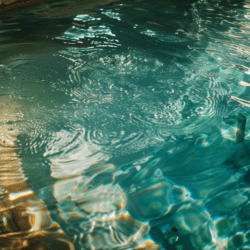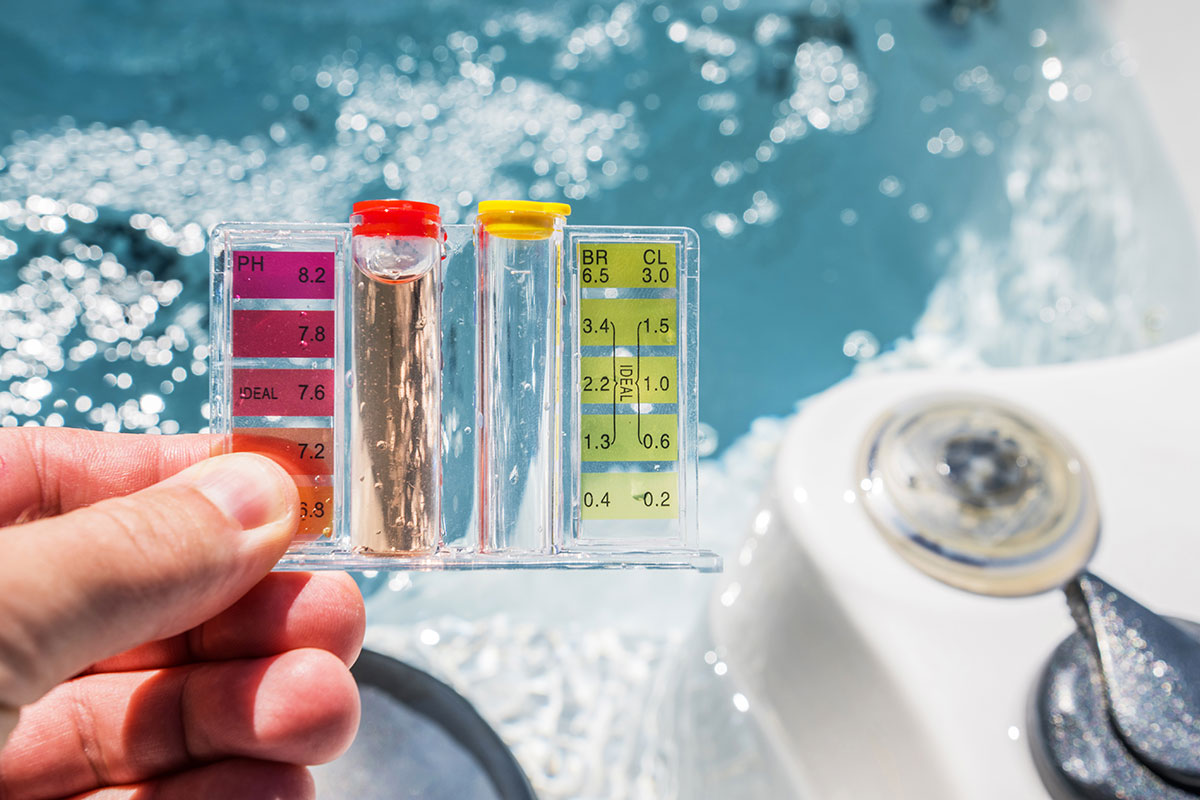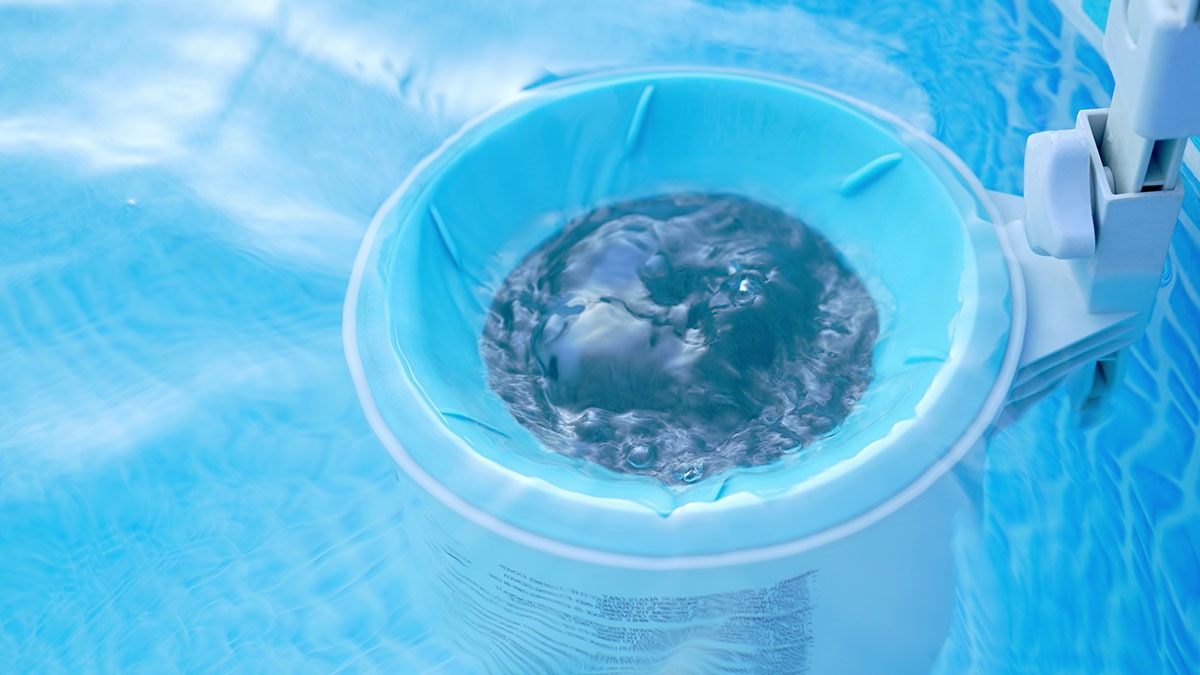How To Effectively Treat Cloudy Pool Water
If you’ve ever caught yourself squinting at the sight of your pool’s cloudy water, believe me, you’re not alone. It’s a nuisance we’ve all faced at one point or another. But don’t sweat it! We did some digging and uncovered effective solutions to clear up that murky mess.
In this guide, we’ll walk you through simple steps to get your pool from foggy to crystal-clear perfection. So, are you ready to jump back into sparkling waters?
Key Takeaways
- Keep your pool filter system clean and running properly to catch tiny particles that can make water cloudy. Regular maintenance, such as backwashing or replacing pool filters when necessary, plays a crucial role in keeping the water clear.
- Test and balance your pool’s chemistry regularly, focusing on chlorine levels, pH, total alkalinity, and calcium hardness. Using reliable testing kits helps correct any imbalances quickly before they lead to cloudy water.
- Use clarifiers or flocculants to tackle stubborn cloudiness by helping small particles clump together so your filter can remove them more efficiently. Following the instructions carefully for these products ensures the best results in clearing up the water.
- Shocking your pool periodically kills bacteria and algae that contribute to cloudiness. Choose the right shock product based on your pool’s condition and follow safety guidelines during application for effective treatment.
- Increase circulation by ensuring no blockages in your filtration system and consider upgrading pool equipment if necessary to enhance water movement throughout the pool. Good circulation helps distribute chemicals evenly and prevents areas where contaminants can accumulate.
Causes of Cloudy Pool Water
Understanding why our pool turns cloudy can guide us to fix it. Issues range from a clogged filtration system, not enough chlorine, to water that doesn’t have the right chemical balance.
Things like leaves or bugs and even algae can also make the water murky. We tackle each problem head-on by knowing what causes it in the first place.
Poor Filtration
Poor filtration is a major reason why pool water turns cloudy. This happens because the filter system fails to catch tiny dirt and debris. These little bits make the water look less clear.
We regularly check our filters for clogs and ensure they’re running long enough to clean the whole pool effectively. Sometimes, we find that replacing an old cleaner or pool pump does wonders for clearing up the water.
Our experience tells us keeping up with filter maintenance plays a huge part in swimming pool upkeep. Whether it’s a cartridge element, diatomaceous earth grid, or sand bed in your filtering device, cleaning them out and performing backwash when needed keeps everything running smoothly.
It stops small particles from turning your swimming area cloudy.
Low Chlorine Levels
We often find that not enough chlorine in the pool turns water cloudy. This happens for a few reasons. Sunlight breaks down chlorine, especially when it’s not stabilized properly. Dirt, leaves, and even sunscreen from swimmers use up the chlorine faster than you might think.
You’ll need to test your pool water often to make sure there’s enough free chlorine keeping things clean.
Next, we tackle another cause of murky waters: unbalanced water chemistry. Getting this right involves checking pH levels, total alkalinity, and calcium hardness with reliable pool water testing kits or seeking advice from a pool service expert.
Knowing these levels helps us take the next step in clearing up our pools correctly.
Unbalanced Water Chemistry
Keeping the water chemistry in balance is key to a sparkling clean pool. Ideal levels are pH 7.4 to 7.6, alkalinity between 100 and 150 ppm, and calcium hardness at 175 to 225 ppm for vinyl liner pools or between 200 and 275 ppm for concrete and plaster pools.
If these numbers go off track, cloudy water can become a big problem.
We tackle this issue by regularly testing the water with pool chemicals designed for analysis. This allows us to adjust levels quickly if they drift from the ideal range. Using filtration systems like cartridge filters or sand filters helps too, as they remove particles that unbalance water chemistry.
Keeping an eye on total dissolved solids ensures our swimming pool maintenance keeps the water clear and inviting every day.
Contaminants like Debris or Algae
Debris and algae in our pool turn the water cloudy. Leaves, twigs, and bugs can easily fall into the water. Algae thrive when chlorine levels drop or water chemistry is off balance.
We tackle these problems head-on. Cleaning is essential to remove physical debris using a pool skimmer while addressing algae requires more aggressive steps like adjusting chlorine levels and balancing the pool’s chemistry.
Using a clarifier or flocculant helps us clump together smaller particles, including tiny bits of algae so our filter system can remove them more effectively. Routine cleaning with automatic pool cleaners also keeps debris at bay.
Regularly checking our pump ensures it operates efficiently, maintaining clear water by keeping contaminants out.
Strategies for Clearing Cloudy Pool Water
We know cloudy pool water can be a headache, but we’ve got the right strategies to clear it up fast. Our methods include using a net for leaves, brushing pool sides, and vacuuming the bottom to get rid of dirt.
We also recommend testing your water regularly and making sure everything is balanced. Sometimes, giving your pool a good shock treatment helps kill bacteria. And don’t forget to keep that filter running all the time! Boosting how your pool water moves can also make a big difference.
Trust us; these steps will have you swimming in crystal-clear water in no time. Keep reading to learn how each technique works wonders for your pool’s health and clarity!
Skimming, Brushing, and Vacuuming Your Pool
Cloudy pool water can be a real bummer during swimming season. It’s important to tackle it head-on with practical steps to ensure the water’s clarity and cleanliness.
Here’s how we do just that with skimming, scrubbing, and vacuuming our pool.
- Start with Skimming: Every day, we take a few minutes to skim the surface of the pool. This simple task helps us get rid of leaves, twigs, and other large debris floating on top. Using a long-handled net, we make sure nothing escapes our reach.
- Move on to Scrubbing: After skimming, grabbing a pool brush to scrub the sides and bottom is next up. This step loosens algae and prevents buildup, keeping those walls clean and smooth. We pay special attention to any nooks where algae love to hide.
- Vacuum Thoroughly: Once everything is loose, it’s time for vacuuming. We hook up our pool vacuum cleaner and go over every inch of the floor slowly to make sure we pick up all the dirt and small particles that have settled at the bottom.
- Focus on Regular Cleaning: Incorporating these tasks into our routine makes a big difference in maintaining our pool’s health. We find setting aside specific days for thorough cleaning helps us stay on track.
These steps not only keep our pool water crystal clear but also prevent future issues related to poor water quality, such as algae growth or unbalanced chemistry.
Following this guide consistently guarantees a swim-ready pool throughout the season!
Testing and Balancing Your Water
We know keeping our pool water clear and sparkling involves a bit more than just skimming leaves off the surface. The secret lies in regular testing and balancing of the water, which ensures everything is at its optimal level for a safe and enjoyable swim.
Let’s dive into how we can achieve this perfect balance.
- Grab a water testing kit: These kits are essential for checking the levels of chlorine, pH, alkalinity, and calcium hardness in our pool. It’s like giving our pool a health check-up to see what it needs.
- Test for free chlorine and combined chlorine levels: This tells us if we need to add more sanitizer to keep the water clean and germ-free. Keeping an eye on these levels helps us make sure the water is safe for everyone to jump in.
- Adjust the pH level: We aim for a pH range of 7.4 to 7.6, which matches our body’s natural pH level closely, making swimming more comfortable and preventing irritation.
- Keep an eye on alkalinity: Ideal alkalinity acts as a buffer for the pH level, making it easier to maintain that perfect balance. We’re looking for an alkalinity between 100 ppm (parts per million) to 150 ppm.
- Check calcium hardness: Especially important for vinyl liner pools, ensuring calcium hardness is within 175 to 225 ppm prevents damage to the pool lining or equipment from too soft or too hard water.
- Use Pool Weekly Clarifier as needed: If we find our water slightly hazy even after balancing these levels, adding a clarifier will help collect small particles into larger ones that our filter can easily catch.
- Make any necessary adjustments: Depending on what we find during testing, we might need to add chemicals carefully to bring everything into balance. Always follow label instructions or consult with professionals when unsure.
Keeping up with these steps allows us not just to enjoy our pool but also extends its life by preventing potential issues before they become costly repairs. Just like taking care of our garden or car, regular checks and balances keep everything running smoothly so we can focus on making the most of those sunny days by the pool.
Shocking Your Pool
After ensuring our pool water is balanced, the next step we dive into is shocking our pool. This process plays a key role in keeping our swimming area clean and clear. Shocking tackles issues like contaminants and algae that make our pool water cloudy.
Here is how we go about it:
- Choose the right type of pool shock – We select a shock product that fits our pool’s needs. If our pool has a lot of use or shows signs of algae, we opt for a stronger formula.
- Read the instructions carefully – Every shock product comes with specific guidelines. We follow them closely to ensure safety and effectiveness.
- Wear protective gear – Safety glasses and gloves protect us from splashes or spills when handling chemicals.
- Wait for the right time – Shocking works best in the late afternoon or evening. UV rays can reduce the effectiveness of chlorine-based shocks during the day.
- Dissolve if necessary – Some shock products require dissolving in water before adding them to the pool. We always add chemicals to water, not the other way around, to prevent dangerous reactions.
- Pour evenly around the pool – For even distribution, we walk around the perimeter of our pool, pouring the solution in at different points.
- Run the filtration system – After adding shock, running our filter helps distribute it throughout the pool more effectively.
- Test water after 24 hours – To ensure safety and cleanliness, we check chlorine levels and other balances a day later.
- Avoid swimming until safe – We wait until chlorine levels drop back to safe parameters before diving back in.
- Regularly schedule shocking sessions – Based on expert recommendations and usage patterns, we plan regular shocking intervals to keep issues at bay.
Through these steps, shocking becomes an integral part of maintaining our swimming environment’s health and clarity.
Running Your Filter 24/7
We know running our pool pump around the clock might sound like a lot, but it plays a crucial role in keeping pool water clear. By ensuring the filter works non-stop, we tackle poor filtration head-on, helping to remove contaminants and tiny particles that cause cloudiness.
This constant operation means our pool stays cleaner and fresher, ready for a swim any time.
Keeping the filter on day and night also helps keep chlorine levels stable, especially important in sun-drenched pools where chlorine can break down quickly. It’s a smart way to make sure our chemical balance stays spot on, fighting off any algae or debris without breaking a sweat.
With this approach, we ensure our swimming area remains inviting and healthy for everyone to enjoy.
Increasing Your Pool Circulation
To increase your pool circulation, we regularly clean and maintain our pools. This means checking the filter for any blockages or buildup that could slow down water movement. A clean pool filter allows water to flow freely, making sure every part of the pool gets a fair share of filtration and chemicals.
We also make it a point to ensure our pool’s pump and filtration system run long enough each day to circulate all the water in the pool completely.
If these steps don’t improve circulation, it might be time for us to consider updating our equipment. Sometimes, replacing an old pump or filter is necessary to meet our pool’s current demands.
Upgrading can dramatically enhance water movement throughout the pool, ensuring clearer and healthier swimming conditions.
Now let’s explore how using clarifiers and flocculants can further assist in maintaining crystal-clear pool water.
Utilizing Pool Clarifiers and Flocculants
Unlocking the secrets to crystal-clear water involves using pool clarifiers and flocculants, which act like magic by gathering tiny particles that cloud your pool into larger ones that your filter can easily catch.
Explore more to see how these helpers can transform your murky pool water into a sparkling oasis.
How to Use Pool Clarifier
Clearing cloudy pool water might seem like a big task, but using a pool clarifier is a straightforward step we recommend. This product helps by clumping together tiny particles into larger ones. That way, our pool filter can catch them more easily. Here’s how we go about it:
- First, we make sure to read the label on the clarifier bottle. Different brands might have different instructions and dosages based on our pool’s size in gallons.
- Then, we measure the correct amount of clarifier needed for our pool. Using too much or too little won’t give us the results we’re aiming for.
- Next, with the pool’s filtration system running, we evenly distribute the clarifier around the pool’s perimeter. This ensures it mixes well throughout the entire pool.
- We let our filter run non – stop for at least 24 hours after adding the clarifier. It needs time to circulate and catch all those newly formed larger particles.
- During this period, we keep an eye on our filter’s pressure gauge. A significant increase might mean it’s time to clean or backwash the filter since it’s catching all those particles.
- Lastly, if our water isn’t clear after 48 hours, we repeat the process but only add half of the initial dose of clarifier.
This method works wonders especially when combined with other upkeep practices like weekly maintenance and taking care of any algae problems first by vacuuming and brushing our pool walls and floor before shocking it to remove algae.
Using a clarifier forms part of a bigger picture in keeping our pools sparkling clean and inviting for everyone to enjoy.
With regular use and proper balance of chemicals, cloudy water will become a thing of the past in our backyards.
How to Use Pool Flocculant
After discussing the effectiveness of pool clarifiers, let’s shift our focus to another vital tool in our arsenal against cloudy water—pool flocculants. These agents are powerful allies in the battle for a crystal-clear pool. They work by causing small particles to clump together, making them heavy enough to sink to the bottom. This process readies your pool for easy cleaning by vacuuming up the settled debris. Here’s a straightforward guide to using pool flocculants effectively:
- Turn off your swimming area’s filter system before you begin. This step is crucial because it allows the flocculant to work without interference.
- Mix the flocculant with water if required by its instructions. Some products need dilution before use, so it’s important to follow the label closely.
- Pour the mixed solution evenly over your pool surface, walking around to ensure wide coverage.
- Once applied, turn your filter system back on for about two hours, then shut it off again. This initial circulation helps distribute the flocculant throughout the water.
- Let your pool sit undisturbed overnight or as long as the product instructions suggest. During this time, particles will coagulate and settle at the bottom.
- The next day, you’ll see that debris has settled on your pool floor. Now it’s time for vacuuming—but set your equipment to waste or bypass mode first! Doing this sends debris out of your system entirely instead of circulating it back into your water.
- Vacuum slowly and carefully to pick up all the coagulated material without stirring it back up into the water column.
Effectively utilizing a pool flocculant revolves around patience and precision in following these steps—a proven path that returns pools from murky depths back to swimming-ready status with startling efficiency!
Common Questions About Cloudy Pool Water
Many people ask us what causes their pool water to look cloudy. We tell them it often comes down to a few key issues:
- not enough cleaning
- too little chlorine
- unbalanced chemicals
- unwelcome substances like leaves or algae
Knowing the root cause helps us tackle the problem correctly.
Another question we hear a lot is whether swimming in cloudy water is safe. We always advise against it because you can’t see what’s lurking beneath the surface. The presence of pathogens or contaminants poses health risks, so it’s best to get your water clear before taking a dip.
Contact WaterTex Pool
We’ve shown you the ropes on clearing up cloudy pool water, from identifying root causes to applying effective fixes. Tackling poor filtration, boosting chlorine levels, balancing water chemistry, and removing contaminants will ensure your pool stays crystal clear.
Remember to make skimming and vacuuming part of your routine and consider using a pool weekly clarifier for best results. Clear pools are not just about looks; they’re safer and more inviting to swim in.
We’re here to guide you through every step, making sure your swimming sanctuary remains perfect for diving into any day. With these strategies in hand, we’re confident you’ll keep your waters pristine with ease.



